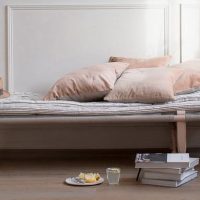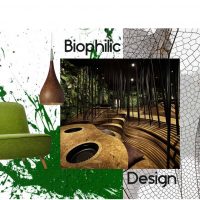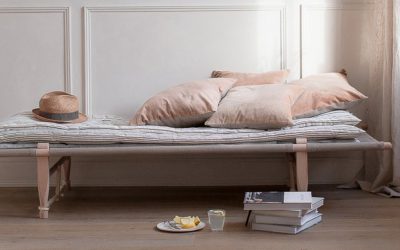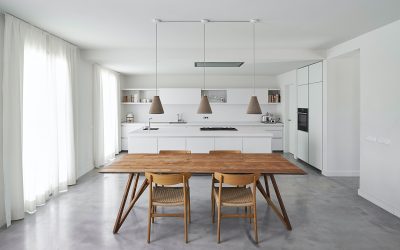Be prepared for the Future of Office Design after the COVID 19 pandemic.
If one was to gauge how popular the mockumentary-style comedy – The Office – was throughout the world it is a clear insight into peoples thinking on… well… the office! And while we may squirm at David, the insufferable bosses, feeble jokes and inappropriate behaviour, there is also a strange sense of comradery with the familiarity and comfort in knowing that it’s the same the world over!
Thankfully office design and thinking have moved a long way since 2003 but not so much as the jump it is about to make as we re-immerse post lockdown!
The New Normal for the Workplace
Covid 19 has affected all forms of human interaction. Areas such as the hospitality industry have brought the dangers into sharp focus for us all. So it makes sense the staff are nervous about infection and bosses are nervous about failing to protect their staff! The biggest change, however, is in how and where we will work once we settle into the ‘New Normal’. Research by Global Workplace Analytics predicts that up to 30% of people will continue to work from home! This is a win-win for many where remote working was already leaping ahead in terms of technology and resources, however, there is also an undercurrent that sticks firmly to the basics that the lack of face-to-face interaction is something employees struggle with…the physical office space is in the midst of a rapid and radicle readjustment both in how they operate and what their overall function in the daily working life holds.
Office changes you must make now
 In terms of the existing office space, there are a number of mandatory changes that will require immediate action, the installation of screens and room dividers, regular handwashing/hand gel stations while staff canteens and staff WC’s will also require high levels of sanitation with visible and frequent sterilisation. The graphic language throughout the space for wayfinding and distancing will also need to be reconsidered in order to mediate how people move through the office space. All of these measures will help employees both feel safe themselves as well as reduce any anxiety that they may endanger others.
In terms of the existing office space, there are a number of mandatory changes that will require immediate action, the installation of screens and room dividers, regular handwashing/hand gel stations while staff canteens and staff WC’s will also require high levels of sanitation with visible and frequent sterilisation. The graphic language throughout the space for wayfinding and distancing will also need to be reconsidered in order to mediate how people move through the office space. All of these measures will help employees both feel safe themselves as well as reduce any anxiety that they may endanger others.
Do I work from home or the office post COVID 19?
But what is the future of the workplace and what will its newfound role be in this rapidly evolving world? The office was already in a fight for legitimacy pre-pandemic, with a generation of employees asking why bother with the commute and the daily scrum for desk space when technology meant many could work from anywhere? Now such questions will have even greater impetus. The actual work that the majority of employees carry out day to day can, as we have all shown over the past number of months, be carried out up a tree! Once you have a laptop, coffee and access to Zoom you are off.
 However tapping away at a keyboard, no matter how technologically advanced it is, can not replace the casual conversation on the stairway that leads to a shares inspiration or a flashlight moment when solutions are born, this is the crunch! Office spaces are no longer the ‘work’ hub, they are the inspiration, the ‘solutions’ hub. Sharing a common space with like-minded people – ok you may not get on with them all! – where new innovations are being shared, new thinking’s are being created and new angles are being tested could become the main focus of the office space. As we get used to a blend of working from home and in the office it will become ever more important for companies to create a space where employees can feel relaxed, free and that it is obvious their physical and mental health is of top priority.
However tapping away at a keyboard, no matter how technologically advanced it is, can not replace the casual conversation on the stairway that leads to a shares inspiration or a flashlight moment when solutions are born, this is the crunch! Office spaces are no longer the ‘work’ hub, they are the inspiration, the ‘solutions’ hub. Sharing a common space with like-minded people – ok you may not get on with them all! – where new innovations are being shared, new thinking’s are being created and new angles are being tested could become the main focus of the office space. As we get used to a blend of working from home and in the office it will become ever more important for companies to create a space where employees can feel relaxed, free and that it is obvious their physical and mental health is of top priority.
What is Sick Building Syndrome?
Have you heard the phrase ‘ sick building syndrome’? indeed back in 2019 Remark Group’s conducted a survey: Air Quality and Wellbeing at Work, their findings reviled the following;
- Nearly half of UK office workers believe that noise has a negative impact on their overall wellbeing.
- 57% of UK office workers think that indoor air quality is affecting their mental and physical health.
- 65% of UK office workers state that the workplace environment would impact on their decision in accepting a job offer
Upholstery, carpet and curtains have long been known to contribute to a higher level of dust and allergens, while furniture is subject to ‘off-gassings’ of harmful chemicals, such as benzene, ethylene glycol and formaldehyde. An abundance of soft furnishings and synthetic materials may therefore start playing less of a role in the office landscapes, while naturally derived products become more prominent.
The days of rows of desks and multi-story office blocks may be numbered as companies look to reduce overheads – why pay increased rents for large office units when employees can be more flexible and combine working from home with collaborating in the office, What we will see more of is smaller more localised office hubs that are both inspirational and natural with a free flow of not only space and air but ideas and innovation.
How to create a positive atmosphere in the office

In terms of the interior space, the feeling is that there will be a more blended approach between the Architectural and Interior design elements. I wrote a blog about Biophilic design, and while the phrase itself may be somewhat overused, no one can argue the positive impact of its design principles especially in this post-pandemic world.
The word Biophilic was granted the name by the psychologist Erich Fromm in 1964. He described it as “the passionate love of life and all that is alive”. Our opening image by Innerspace Cheshire demonstrates how they have created and installed a Naturemoss wall into the breakout space of this revamped office space.
Essentially Biophilic Design is the incorporation of nature and natural elements, materials and forms into architecture and interiors. Recent studies have shown convincing evidence of the positive benefits of human interaction with nature. Research shows that it can improve productivity, lower stress levels, enhance learning comprehension, and increase recovery rates from illness.
There are a number of factors that combine to form the overall principles of Biophilic Design. Elements such as Natural Lighting and Air; Planting; Natural Materials; Naturalistic Shapes and Forms; Biomimicry and Cultural Identity all play a role in encouraging human engagement within the natural world.
While all these measures may have a questionable impact when it comes to stave away this and future pandemics there is no doubt it will help improve overall employee stress levels, health and well being and ultimately improve overall staff productivity.
However many businesses will decide that they are very happy for their staff to continue working from home so they can take advantage of downsizing office space, many have even reported increased productivity with staff working longer hours at home. If you are thinking about the home office take the sustainable option and read our article, How to Create an Eco Friendly Home Office.
At Yellow Brick Road Design – Devon-based Domestic Interior Design and Commercial Interior Design & Project Management, we love to push the boat out on both our Commercial Interior Design and Domestic Interior Design Projects. We look forward to forging new relationships and we aim to work with all of our clients to create that individual space that will help them stand out from the crowd.









